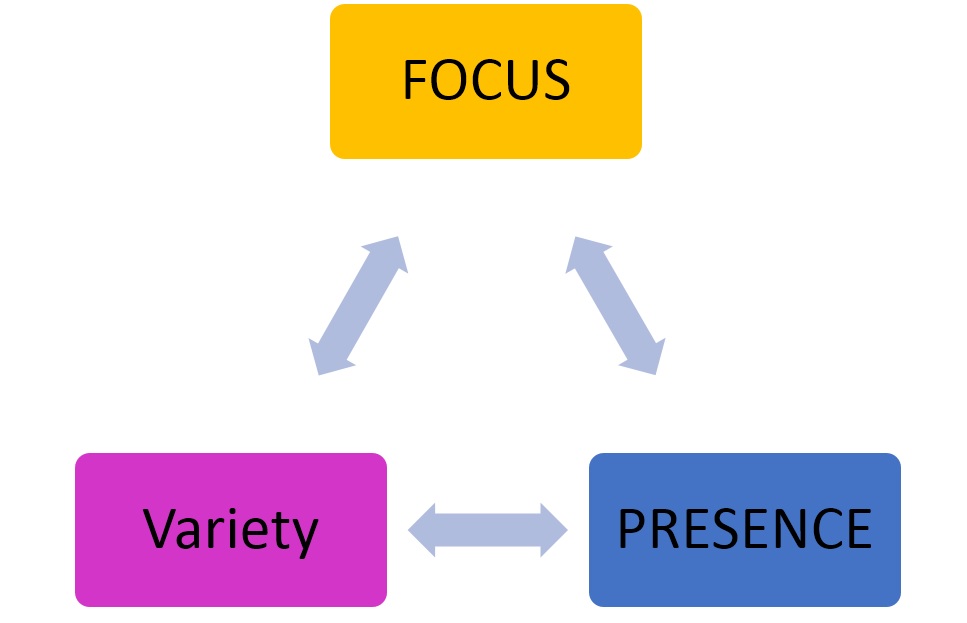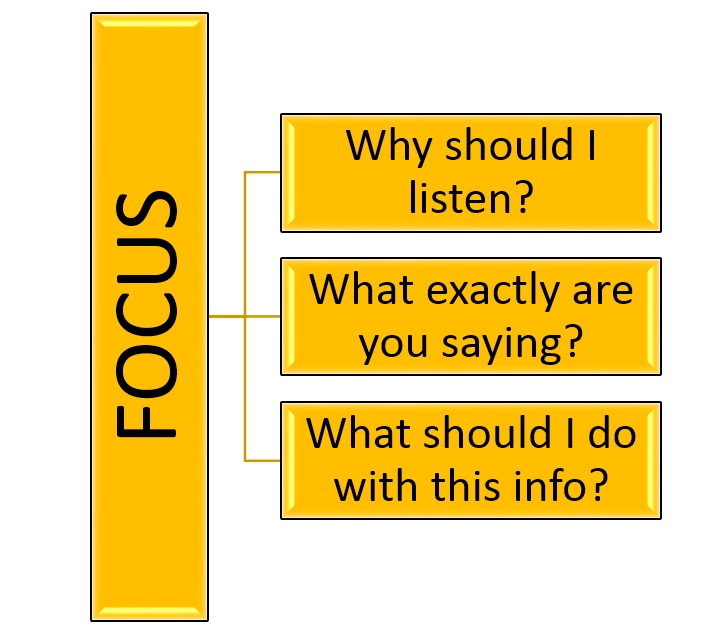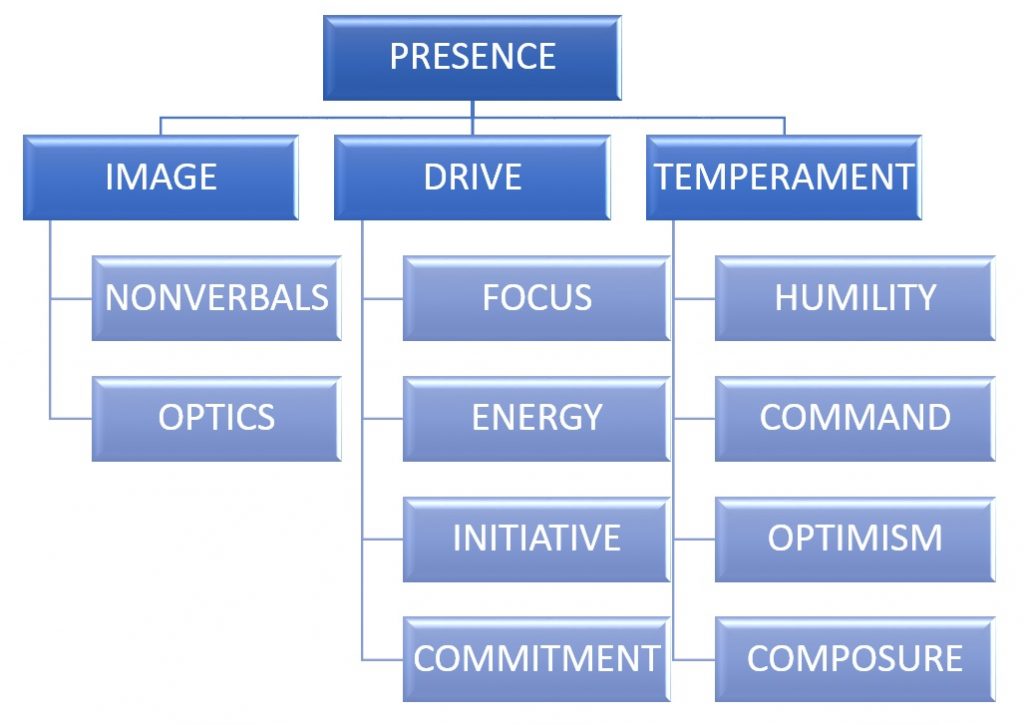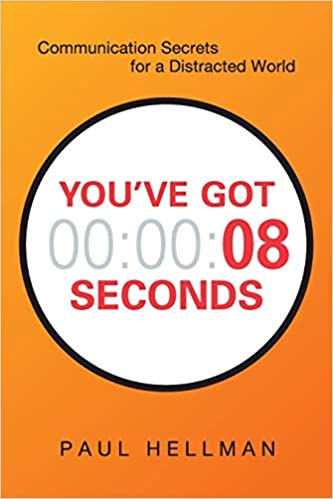Paul Hellman believes when someone speaks to an audience, they only have 8 seconds to capture people’s attention. In his book “You’ve Got 8 Seconds: Communication Secrets for a Distracted World”, he talks about three strategies that will help make people listen and remember what they hear.

1.FOCUS
Focus means to be the audience.
Paul Hellman suggests using the fast-focus method. The essence of the method: imagine, you are the audience. People think only of themselves. When the audience listens to you, they ask themselves three questions. If you answer these questions, you will be able to win the attention of the listener.
1. Why should I listen?
Fast focus with a purpose statement. In the first sentence, indicate a goal that should determine a real benefit for the listener, or at least hook him.
2. What exactly are you saying?
Fast focus on your main message. After you have attracted the audience’s attention by setting a goal, tell them about the subject of your speech:
Do not give out the main idea in a ready-made form: discuss different ideas. You can do this using the following tools: a solar system, a tree, an organizational chart. According to the author, the main thing is to know the main thing. The main idea should be short and simple (no more than 10 words), and different from others.
3. What should I do with this info?
Fast focus with a call to action. Only passing information to the listener is not the best option. Your speech should make the audience think or feel something. An effective call to action must begin with a verb.

Paul Hellman describes three other ways to win attention
– Start with your conclusion. This method is good when you don’t have much time – a minute or two.
– Tell a story. Storytelling is effective if you are asked to talk about your achievements. SOAR method is the optimal structure that will help you clearly and quickly report your progress.
S – situation
O – obstacle
A – action
R – result
-Use the XYZ formula. When X happens, I feel Y, because of Z. This method is best used when you give feedback.
2. VARIETY
Variety means to be slightly different. In order to be different, the author gives a few tips.
– Speed up/ speed slowly
Any activity in the usual rhythm sooner or later becomes boring. Try to speak faster from time to time. Don’t forget to make meaningful pauses to highlight an important idea, or before moving on to the next point in your speech. Pronounce important ideas more slowly than further explanation.
– Use three different ways to persuade: head, heart, hands.
There are three centers of perception: the head, heart, and hands. In each case, you need to choose which one you want to influence. If you want all listeners to learn as much as possible, use all three centers.
Head: what will the audience think about after your speech? To influence your thinking, use proven information and logic. Ask questions that make you think.
Heart: what will the audience feel? To influence your feelings, tell compelling stories. Ask them to imagine different scenes. Share your feelings.
Hands: what will listeners do? Model the desired behavior or, on the contrary, shows how not to do it. Organize a practice. Call for action.
Paul Hellman also lists 10 unusual ways to start your speech
- Question
- Quiz
- You are probably thinking (or feeling or wondering)
- Imagine
- Draw an analogy
- Tell a short story
- Demo/show
- Keyword, number, or phrase
- Quote
- Unusual fact
The author advises using the 2.5 step method when you tell stories. The 2.5 step method consists of the following steps:
1: for creating a story: open with a problem.
2: Close your story with a business-relevant point.
2.5: Move from the first line to the last, quickly.
3. PRESENCE
There are people who attract attention. The audience wants to listen to them, follow them, imitate them. The author calls this phenomenon – PRESENCE. To become such a person, you need to work on your image, drive, and temperament. Paul Hellman describes these three groups by dividing them into 10 items.

Image
Image is divided into nonverbals and optics. Nonverbals include voice and body language. Voice: volume, speed, pitch, pauses, clarity. Body language: facial expression, eye contact, posture, gesture.
Optics attend to physical appearance, office appearance, social media appearance.
Drive
Drive consists of focus, energy, initiative, and commitment.
Focus. Don’t distract. Don’t overload the listener with unnecessary details. Plan your speech based on your audience.
Energy. Use physical, emotional, and mental energy.
Initiative. Offer new ideas, experiment with new approaches.
Commitment. Take responsibility for getting things done. Be persistent.
Temperament
Temperament includes humility, command, optimism, and composure.
Humility. The ability to recognize mistakes and learn from them. Value others’ ideas and involvement. Listen carefully and respectfully.
Command. Take the lead. Express your opinion.
Optimism. Treat problems and tasks with a positive attitude, believe in success.
Composure. Keep calm even under pressure, manage stress. Use a sense of humor in difficult situations.
The book “You’ve Got 8 Seconds: Communication Secrets for a Distracted World” is about how to make presentations and perform in front of an audience. The book is characterized by the simplicity of material feed and fascinating narrative in balance with a good structure and a lot of practical benefits.
Read more marketing and sales Book Reviews in the special section of the website.





